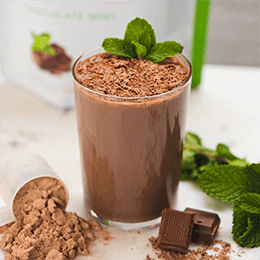Carbohydrates have been given a bad reputation for the longest time. There are even some diets that exclude carbohydrates completely. But, if they are so bad for us, why are they listed on the universal food pyramid? The dictionary description of carbohydrates I found when I Googled ‘What do carbohydrates do for our body’ states: “Carbohydrates are a source of energy. When eaten, the body converts most carbohydrates into glucose (sugar), which is used to fuel cells such as those of the brain and muscles. Carbohydrates are one of three macronutrients (nutrients that form a large part of our diet) found in food – the others being fat and protein.” Clearly we need to consume carbohydrates in order to maintain a healthy body. However, there are good carbs and there are bad ones. The carbs listed on the food pyramid are found in foods like sweet potatoes, legumes, milk, fruit, potatoes, popcorn, whole grains. If you are getting your carbs from processed or refined foods, you are not getting the nutrients your body needs. Process or refined carbs are linked to inflammation and excess fat storage. So, now that we understand what a good carb is, let's talk about carb cycling.
Why carb cycle?
Carb cycling is a dietary approach in which you alternate carb intake on a daily, weekly or monthly basis. It’s purpose can be to help in weight loss, to maintain a physical performance like a bodybuilding contest, or to help push yourself off of a weight plateau. Some cycle their carbs from one day to the next. While other cycles are every few days, weeks, or even months. In addition, the rotation moves from low or no carbs, to moderate carbs, to high carbs. In short, carb cycling aims to time carbohydrate intake to when it provides maximum benefit and exclude carbs when they’re not needed. AuthorityNutrition.com states, “You can program your carb intake based on a variety of factors, including:
Body Composition Goals: Some will reduce carbs during a diet, then add them back during a “muscle building” or performance phase.
Training and Rest Days: One popular approach is a higher carb intake on training days and a lower carb intake on rest days.
Scheduled Refeeds: Another popular approach is to do 1 or several days at a very high-carb intake to act as a “refeed” during a prolonged diet.
Special Events or Competitions: Athletes will often “carb load” prior to an event, and many physique competitors will do the same before a bodybuilding show or photoshoot.
Type of Training: Individuals will tailor carb intake depending on the intensity and duration of a particular training session; the longer or more intense the training is, the more carbs they will consume and vice versa.
Body Fat Levels: Many individuals will cycle their carbohydrates based on their level of body fat. The more lean they become, the more high-carb days or blocks they include. A typical week of carb cycling may include 2 high carb days, 2 moderate carb days, and 3 low carb days. Protein intake usually falls between the carb days and fat days vary depending on carb intake. A high carb day means a low fat day, and a low carb day means a high fat day. Carb cycling takes peak awareness and planning and is suited to the individual dieter.
Maximizing Muscle Growth
Healthy carbohydrates are necessary for overall good health. To consume just the right amount of carbs, and at just the right time, can be challenging. It turns out that what carbs you eat -- and especially, when you eat them -- can drastically affect your body’s response to them. Through this process called carb cycling, you can manipulate carb consumption to maximize muscle growth while you minimize negative effects, notes LiveStrong.
A Complicated Process
The plan requires strict adherence and meticulous carb counting, so it’s not for everyone. In fact, carb cycling is most effective for those who already are fairly lean and have a final 10 to 15 pounds to lose, or who just want to drop a few body fat percentage points. (For those with a lot of weight to lose, simply cutting back on starchy carbs will generate results.) The individual mechanisms behind carb cycling are supported by research. However, no direct research has investigated a long-term carb cycling diet. It’s really a program for those who have been able to meet nearly all their goals. Use carb cycling if you need to lose those last 15 to 20 pounds. Always make sure that your protein intake is enough and you maintain a calorie deficit. Carb cycling is often used before a performance of some kind. Always experiment with the protocol and amounts of carbohydrates to find the best fit for you.
Sources:
http://authoritynutrition.com/carb-cycling-101 http://www.livestrong.com/article/558001-carb-cycling-for-fat-loss















